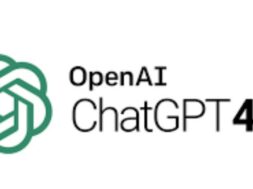
Technology: OpenAI may go bankrupt in 2024!
Virendra Pandit
New Delhi: In the fast-changing Artificial Intelligence domain, OpenAI, which came with a bang in 2022, may go bankrupt in 2024, the media reported.
The reason is the exorbitant costs involved to run OpenAI’s tool ChatGPT which took the world by storm this year.
Initially, Microsoft announced a new multiyear, multibillion-dollar investment with the artificial intelligence laboratory, OpenAI. Its investment was the third phase of the partnership, following Microsoft’s previous investments in 2019 and 2021.
Sam Altman-led company OpenAI trained the ChatGPT, launched on November 30, 2022, which interacts with the user in a conversational way. Its dialogue format enabled ChatGPT to answer follow-up questions, admit its mistakes, challenge incorrect premises, and reject inappropriate requests.
According to reports, to keep the show going, OpenAI is shelling out nearly USD 700,000 daily (around Rs.5.8 crore).
If the company fails to become profitable soon, the OpenAI investors may stop financing it, forcing it to go bankrupt next year.
Microsoft’s USD 10 billion investment in OpenAI was possibly keeping the company afloat at the moment. OpenAI projected an annual revenue of USD 200 million in 2023, which might reach up to USD 1 billion in 2024, but the losses are mounting. In May 2023, OpenAI’s losses doubled to USD 540 million ever since it started developing ChatGPT.
Although CEO Sam Altman has no equity in OpenAI, the company shifted from being a non-profit to a profit-making one a few months ago.
Other rivals like Google’s Bard are also posing stiff competition.
The shrinking number of user visits to the ChatGPT website showed that after hitting a record high of 1.9 billion user visits in May 2023, the generative AI chatbot witnessed 1.7 billion user visits in June and only 1.5 billion in July.
Among the major reasons for the declining use of ChatGPT could be API cannibalization wherein most companies are prohibiting employees from using the generative AI chatbot for work, but are allowing them to use the API to leverage the large language model (LLM) in other workflows, the reports said.
According to Analytics India Magazine: “It is rather presumptuous of OpenAI to assume that the decline in users is just because people have started using the API to build their own products. Interestingly, the twist over here is the rise of open-source LLM models. Meta’s Llama 2, in partnership with Microsoft, allows people to use the model commercially.
“So, instead of going for what OpenAI offers, which is a paid, proprietary, and restricted version, why would people not go for an easily modifiable Llama 2?”
Another challenge for the company is the shortage of graphics processing units (GPUs). Altman earlier had underscored lack of GPUs on the market affected the company’s capacity to improve and develop new models.
Earlier, the media reported the company had filed for a trademark application for ‘GPT-5’ which showed the firm would keep on training models.
More. ChatGPT could also face a challenge from Elon Musk, who is building a rival chatbot. “Interestingly, his idea of building a ‘TruthGPT’, which is not as politically biased as ChatGPT, was found interesting by a lot of people.”














